[Adv. Sci.] Optical devices based on zero-dimensional MXene for ultrafast and ultra-narrow photonics applications
QQ Academic Group: 1092348845
Detailed
Two-dimensional transition metal carbides and nitrides (MXenes) have been enthusiastically and extensively studied due to their highly tunable and customizable electronic/optical properties similar to graphene.
The general formula of MXene is Mn+1XnTx, where M is an early transition metal, X is C and/or N, T is the surface end (OH, O or F), n = 1, 2 or 3, which has a flexible surface base Group adjustment and layered structure make the material have good surface hydrophilicity.
At present, many researches on MXene stay on two-dimensional MXene nanosheets, including energy storage, sensing, nonlinear optics, and lasers. Although there have been some reports on the use of zero-dimensional MXene quantum dots in light-emitting diodes and biological Excellent characteristics of probes and other aspects.
However, the properties of zero-dimensional MXene quantum dots in nonlinear optics and ultrafast and ultra-narrow photonics applications due to size changes have not been studied.
Quantum dots have quantum confinement effects and edge effects, and changes in size can enhance their absorption and relaxation time when used as optoelectronic devices. These characteristics have been studied before. Research on the excellent properties of quantum dots as saturable absorbers (SA) has also been reported.
The quantum dots that have been studied include black phosphorous (BP) quantum dots, transition metal sulfide (TMDS) quantum dots, perovskite quantum dots, etc. Inspired by the wide-band absorption characteristics, adjustable band gap and high carrier mobility of MXene materials.
The research group of Professor Zhang Han and Associate Professor Wen Qiao of Shenzhen University studied the nonlinear optical properties and ultrafast carrier dynamics of zero-dimensional MXene quantum dots, and achieved stable ultrafast and ultra-narrow laser output.
The research work is published in the journal Advanced Science as "Zero-Dimensional MXene-Based Optical Devices for Ultrafast and Ultranarrow Photonics Applications".
First, we obtained the quantum dots of MXene using the idea of liquid phase stripping. Based on the quantum confinement effect of quantum dots, we used the open-hole Zscan technology to obtain the maximum nonlinear absorption coefficient of –(11.24 ± 0.14)×10-2 cm/GW.
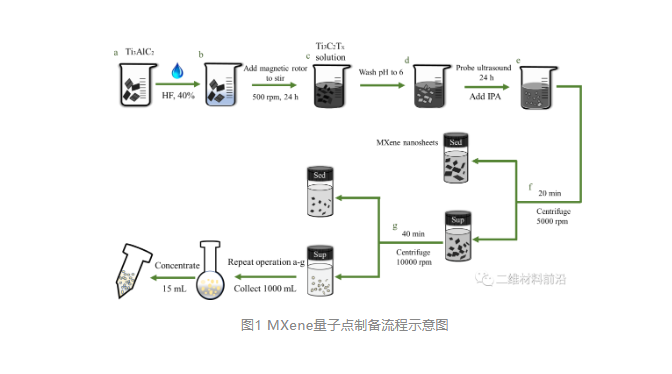
Figure 1 Schematic diagram of the preparation process of MXene quantum dots
The super-high resolution non-degenerate transient absorption (TA) spectroscopy technique was used to study the carrier dynamics process of zero-dimensional MXene. The results show that the TA absorption signal reaches its maximum value within 1.28 ps.
In addition, zero-dimensional MXene is used to generate ultrashort pulses in Er-doped or Yb-doped fiber laser cavities. A high signal-to-noise ratio (72 dB) femtosecond pulse output is obtained, with a pulse duration as short as 170 fs and a spectral bandwidth of 14.8 nm.
Finally, an ultra-narrow fiber laser based on zero-dimensional MXene is also studied. The full width at half maximum of the laser is only 5 kHz, and the power fluctuation is less than 0.75% of the average power. Experiments have proved that zero-dimensional MXene is an excellent saturable absorber and has broad application prospects in ultrafast and ultra-narrow photonics.
First, we use the idea of liquid phase stripping to obtain a high-purity, uniform-size MXene quantum dot solution, which can be guaranteed by high-speed centrifugation and concentration. In order to obtain MXene quantum dots more easily, we chose a small-sized MAX powder precursor (200 mesh, provided by 11 Technology).
Morphological characterization, such as transmission electron microscope (TEM), high resolution transmission electron microscope (HRTEM), atomic force microscope (AFM), etc. can also prove that we have prepared high-quality MXene quantum dots.
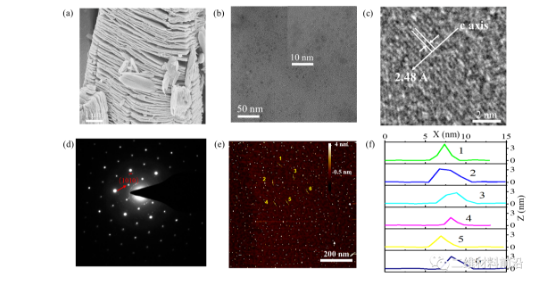
Figure 2 Morphology characterization of MXene quantum dots
Since the band gap of quantum dots is completely open, they will fluoresce when exposed to light of a specific wavelength. At present, there are two main reasons for its luminescence mechanism: size effect and surface defects. We tested the fluorescence characteristics of MXene QDs with a fluorescence spectrometer and obtained the PLE spectrum.
Raman spectroscopy is also used to characterize the bulk MXene and MXene QDs. There are six prominent peaks in the spectrum from 200 to 1100 cm, which is consistent with previous studies. UV-Vis absorption spectroscopy is used to study the optical properties of MXene QDs. The band gap is determined to be 2.84 eV by plotting the absorption to the edge of the band. The band gap of bulk MXene is relatively small, about 0.1 eV.
However, as the size decreases, the band gap gradually increases to allow radiated electrons to transition. It is reasonable for MXene QDs to increase the band gap through quantum effects to achieve luminescence. MXene QDs have a broadband absorption range of 300 to 1400 nm. There is a peak in the UV-vis absorption spectrum near 370 nm, and the peak of the PLE spectrum coincides with the peak of the UV-vis absorption spectrum.

Figure 3 Optical characterization of MXene quantum dots
Transient absorption (TA) spectroscopy reveals the optically excited carrier dynamics of MXene quantum dots. Broadband photo-induced absorption (PIA) spectra were observed in OD MXene QDs. This PIA signal was attributed to excited state absorption (ESA). The TA signal reaches its maximum value at 1.28 ps and then begins to cool down.
In order to analyze the effect of material size on carrier dynamics, we also tested MXene nanosheets (NSs) under the same conditions. It is worth noting that the attenuation of TA signal carrier is faster than that of MXene QDs. The decay index is 189.3±14.0 ps, and the obtained carrier lifetime change is caused by the change of electronic energy band structure caused by quantum confinement.
When the morphology of bulk semiconductors is changed to low-dimensional (0D QDs, 1D nanowires and 2D thin films), the continuous energy band is modified to discrete energy levels. The energy value between these energy levels increases significantly, while the phonon energy remains constant. It is worth noting that in the carrier cooling process, the interaction between the carrier and the phonons is an essential process.
As a result, more phonons should participate in cooling the hot electrons, which is the phonon-bottleneck effect. The reduction in the efficiency of the interaction between carriers and phonons will lead to a prolonged cooling process for low-sized materials. This carrier slowing phenomenon has been studied in conventional quantum dots and 2D thin films, which leads to stronger interactions between light and materials.
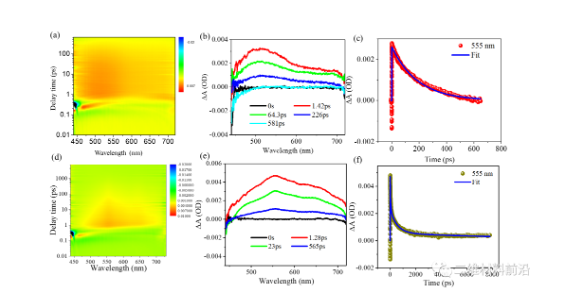
Figure 4 Transient absorption results of MXene nanosheets and quantum dots
The non-linear absorption properties in the 800-1550nm band were characterized by open-hole Zscan and Pscan technologies, and both showed saturable absorption characteristics, with an absorption coefficient of –(11.24 ± 0.14)×10-2 cm GW-1, the maximum modulation depth It is (9.01 ± 0.21)%.
Due to the absorption enhancement caused by the quantum confinement effect, the measured nonlinear absorption coefficient of MXene quantum dots is greater than the nonlinear absorption coefficient produced by MXene nanosheets.
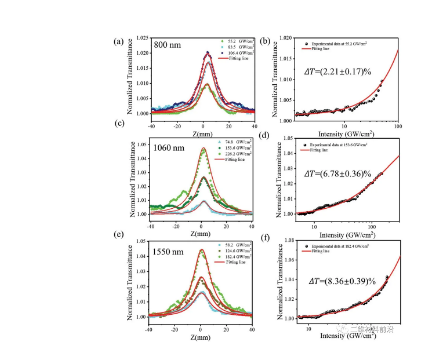
Figure 5 Nonlinear absorption characteristics of MXene quantum dots in a wide band
The call for researching low-dimensional saturable absorber materials to replace semiconductor saturable absorber mirrors (SESAM) is increasing. For the first time, we transferred the quantum dots of MXene to the side profile of the D-type fiber to make a saturable absorber optoelectronic device, which uses the principle of evanescent field to regulate the light in the fiber.
We applied the fabricated MXene quantum dot device to Er-doped and Yb-doped fiber lasers, and generated stable femtosecond and picosecond pulses, respectively. The pulses generated can be as narrow as 170fs in the communication band (1550nm), and the signal-to-noise ratio Up to 72 dB.
The 1060nm band is a commonly used band of industrial lasers, and our output mode-locked pulse width in this band is 182ps, which provides ideas for the generation and application of industrial lasers.

Figure 6 Mode-locked fiber laser resonator based on MXene quantum dots
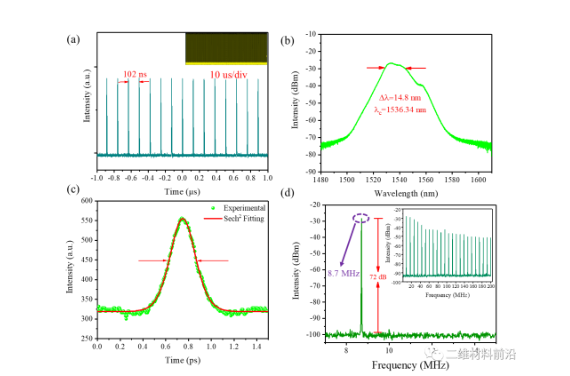
Figure 7 Output characteristics of Er-doped fiber laser based on MXene quantum dots
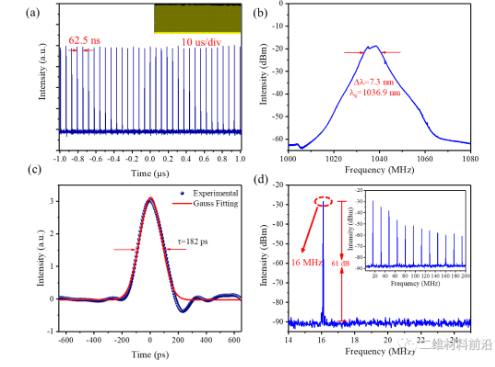
Figure 8 Output characteristics of Yb-doped fiber laser based on MXene quantum dots
In addition, we also apply MXene quantum dots to single-frequency fiber lasers. The ultra-narrow fiber laser has a line width of only 5 kHz, and its power fluctuation is less than 0.75% of the average power. This is the most stable single-frequency fiber laser based on nanomaterials. Output.

Figure 9 Schematic diagram and output characteristics of single-frequency fiber laser resonator based on MXene quantum dots
Article source: Xu Ning Frontier of 2D Materials
This information is sourced from the Internet for academic exchange only. If there is any infringement, please contact us to delete it immediately.
The general formula of MXene is Mn+1XnTx, where M is an early transition metal, X is C and/or N, T is the surface end (OH, O or F), n = 1, 2 or 3, which has a flexible surface base Group adjustment and layered structure make the material have good surface hydrophilicity.
At present, many researches on MXene stay on two-dimensional MXene nanosheets, including energy storage, sensing, nonlinear optics, and lasers. Although there have been some reports on the use of zero-dimensional MXene quantum dots in light-emitting diodes and biological Excellent characteristics of probes and other aspects.
However, the properties of zero-dimensional MXene quantum dots in nonlinear optics and ultrafast and ultra-narrow photonics applications due to size changes have not been studied.
Quantum dots have quantum confinement effects and edge effects, and changes in size can enhance their absorption and relaxation time when used as optoelectronic devices. These characteristics have been studied before. Research on the excellent properties of quantum dots as saturable absorbers (SA) has also been reported.
The quantum dots that have been studied include black phosphorous (BP) quantum dots, transition metal sulfide (TMDS) quantum dots, perovskite quantum dots, etc. Inspired by the wide-band absorption characteristics, adjustable band gap and high carrier mobility of MXene materials.
The research group of Professor Zhang Han and Associate Professor Wen Qiao of Shenzhen University studied the nonlinear optical properties and ultrafast carrier dynamics of zero-dimensional MXene quantum dots, and achieved stable ultrafast and ultra-narrow laser output.
The research work is published in the journal Advanced Science as "Zero-Dimensional MXene-Based Optical Devices for Ultrafast and Ultranarrow Photonics Applications".
First, we obtained the quantum dots of MXene using the idea of liquid phase stripping. Based on the quantum confinement effect of quantum dots, we used the open-hole Zscan technology to obtain the maximum nonlinear absorption coefficient of –(11.24 ± 0.14)×10-2 cm/GW.

Figure 1 Schematic diagram of the preparation process of MXene quantum dots
The super-high resolution non-degenerate transient absorption (TA) spectroscopy technique was used to study the carrier dynamics process of zero-dimensional MXene. The results show that the TA absorption signal reaches its maximum value within 1.28 ps.
In addition, zero-dimensional MXene is used to generate ultrashort pulses in Er-doped or Yb-doped fiber laser cavities. A high signal-to-noise ratio (72 dB) femtosecond pulse output is obtained, with a pulse duration as short as 170 fs and a spectral bandwidth of 14.8 nm.
Finally, an ultra-narrow fiber laser based on zero-dimensional MXene is also studied. The full width at half maximum of the laser is only 5 kHz, and the power fluctuation is less than 0.75% of the average power. Experiments have proved that zero-dimensional MXene is an excellent saturable absorber and has broad application prospects in ultrafast and ultra-narrow photonics.
First, we use the idea of liquid phase stripping to obtain a high-purity, uniform-size MXene quantum dot solution, which can be guaranteed by high-speed centrifugation and concentration. In order to obtain MXene quantum dots more easily, we chose a small-sized MAX powder precursor (200 mesh, provided by 11 Technology).
Morphological characterization, such as transmission electron microscope (TEM), high resolution transmission electron microscope (HRTEM), atomic force microscope (AFM), etc. can also prove that we have prepared high-quality MXene quantum dots.

Figure 2 Morphology characterization of MXene quantum dots
Since the band gap of quantum dots is completely open, they will fluoresce when exposed to light of a specific wavelength. At present, there are two main reasons for its luminescence mechanism: size effect and surface defects. We tested the fluorescence characteristics of MXene QDs with a fluorescence spectrometer and obtained the PLE spectrum.
Raman spectroscopy is also used to characterize the bulk MXene and MXene QDs. There are six prominent peaks in the spectrum from 200 to 1100 cm, which is consistent with previous studies. UV-Vis absorption spectroscopy is used to study the optical properties of MXene QDs. The band gap is determined to be 2.84 eV by plotting the absorption to the edge of the band. The band gap of bulk MXene is relatively small, about 0.1 eV.
However, as the size decreases, the band gap gradually increases to allow radiated electrons to transition. It is reasonable for MXene QDs to increase the band gap through quantum effects to achieve luminescence. MXene QDs have a broadband absorption range of 300 to 1400 nm. There is a peak in the UV-vis absorption spectrum near 370 nm, and the peak of the PLE spectrum coincides with the peak of the UV-vis absorption spectrum.

Figure 3 Optical characterization of MXene quantum dots
Transient absorption (TA) spectroscopy reveals the optically excited carrier dynamics of MXene quantum dots. Broadband photo-induced absorption (PIA) spectra were observed in OD MXene QDs. This PIA signal was attributed to excited state absorption (ESA). The TA signal reaches its maximum value at 1.28 ps and then begins to cool down.
In order to analyze the effect of material size on carrier dynamics, we also tested MXene nanosheets (NSs) under the same conditions. It is worth noting that the attenuation of TA signal carrier is faster than that of MXene QDs. The decay index is 189.3±14.0 ps, and the obtained carrier lifetime change is caused by the change of electronic energy band structure caused by quantum confinement.
When the morphology of bulk semiconductors is changed to low-dimensional (0D QDs, 1D nanowires and 2D thin films), the continuous energy band is modified to discrete energy levels. The energy value between these energy levels increases significantly, while the phonon energy remains constant. It is worth noting that in the carrier cooling process, the interaction between the carrier and the phonons is an essential process.
As a result, more phonons should participate in cooling the hot electrons, which is the phonon-bottleneck effect. The reduction in the efficiency of the interaction between carriers and phonons will lead to a prolonged cooling process for low-sized materials. This carrier slowing phenomenon has been studied in conventional quantum dots and 2D thin films, which leads to stronger interactions between light and materials.

Figure 4 Transient absorption results of MXene nanosheets and quantum dots
The non-linear absorption properties in the 800-1550nm band were characterized by open-hole Zscan and Pscan technologies, and both showed saturable absorption characteristics, with an absorption coefficient of –(11.24 ± 0.14)×10-2 cm GW-1, the maximum modulation depth It is (9.01 ± 0.21)%.
Due to the absorption enhancement caused by the quantum confinement effect, the measured nonlinear absorption coefficient of MXene quantum dots is greater than the nonlinear absorption coefficient produced by MXene nanosheets.

Figure 5 Nonlinear absorption characteristics of MXene quantum dots in a wide band
The call for researching low-dimensional saturable absorber materials to replace semiconductor saturable absorber mirrors (SESAM) is increasing. For the first time, we transferred the quantum dots of MXene to the side profile of the D-type fiber to make a saturable absorber optoelectronic device, which uses the principle of evanescent field to regulate the light in the fiber.
We applied the fabricated MXene quantum dot device to Er-doped and Yb-doped fiber lasers, and generated stable femtosecond and picosecond pulses, respectively. The pulses generated can be as narrow as 170fs in the communication band (1550nm), and the signal-to-noise ratio Up to 72 dB.
The 1060nm band is a commonly used band of industrial lasers, and our output mode-locked pulse width in this band is 182ps, which provides ideas for the generation and application of industrial lasers.

Figure 6 Mode-locked fiber laser resonator based on MXene quantum dots

Figure 7 Output characteristics of Er-doped fiber laser based on MXene quantum dots

Figure 8 Output characteristics of Yb-doped fiber laser based on MXene quantum dots
In addition, we also apply MXene quantum dots to single-frequency fiber lasers. The ultra-narrow fiber laser has a line width of only 5 kHz, and its power fluctuation is less than 0.75% of the average power. This is the most stable single-frequency fiber laser based on nanomaterials. Output.

Figure 9 Schematic diagram and output characteristics of single-frequency fiber laser resonator based on MXene quantum dots
Article source: Xu Ning Frontier of 2D Materials
This information is sourced from the Internet for academic exchange only. If there is any infringement, please contact us to delete it immediately.
- Previous: ACS Nano: Ru/MXene/TiO
- Next: MXene breakthrough: Na


 mxene academic
mxene academic
